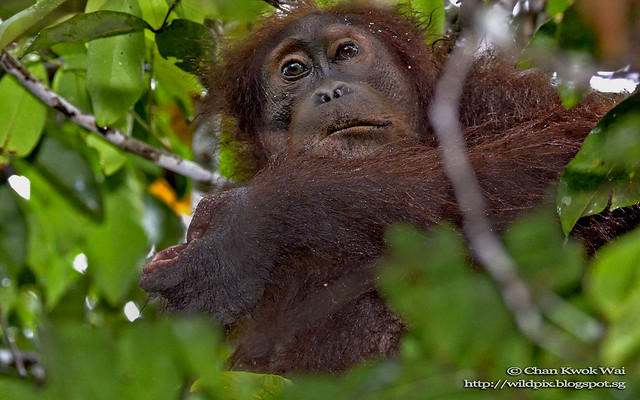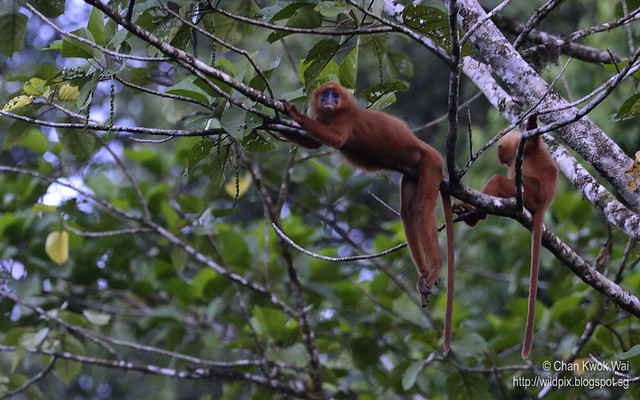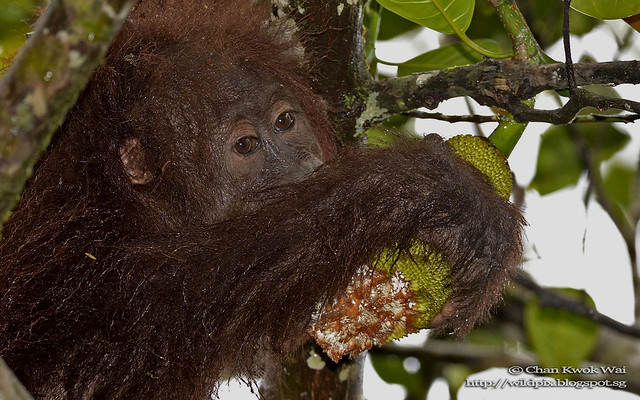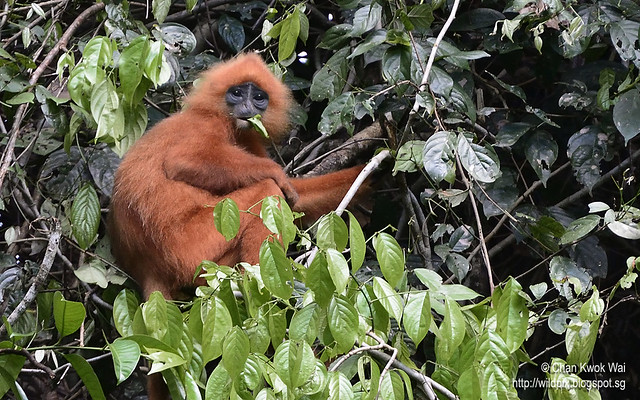Danum Valley 2013: D600 takes on Orang-utan and Red Leaf Langur
Am I entirely happy with D600?
Not exactly.
I complaint about low-light focusing issue in my previous post . So why am I still using it?
Well, D600's ISO performance is simply outstanding. I had my D600 on AUTO-ISO for day time shots. I set the highest ISO at 3200 with minimum shutter speed at 1/160. As long as the photo is properly exposed, I don't find noise a problem.
Below are some shots of a Orang-utan with her baby, feasting on a Jackfruit tree near the cookhouse. Images were captured using AFS 300mm f2.8 VR with a 1.7x Teleconverter. The combination was quite an overkill as I was not expecting the Orang-utans to be this close. The images turned out to be sharp even at high ISO.
Well, D600's ISO performance is simply outstanding. I had my D600 on AUTO-ISO for day time shots. I set the highest ISO at 3200 with minimum shutter speed at 1/160. As long as the photo is properly exposed, I don't find noise a problem.
Photographing the Orang-utans
Below are some shots of a Orang-utan with her baby, feasting on a Jackfruit tree near the cookhouse. Images were captured using AFS 300mm f2.8 VR with a 1.7x Teleconverter. The combination was quite an overkill as I was not expecting the Orang-utans to be this close. The images turned out to be sharp even at high ISO.
 |
| Nikon D600 |
 | |||||
Nikon D600
|
 |
| Nikon D600 |
Photographing the Red Leaf Langurs on DX mode
While, I was quite happy with D600 on the Orang-utan, I was not too pleased with it on the Red Leaf Langurs. This was because the langurs were too high up on the tree, thus I was forced to use DX mode (3936x2624 = 10.3MP) since I only had my AF-S 70-300mm VR on. They were also shot in poor lighting, some under canopy at dusk. Again, I encountered focus lock issue but it was likely due to focusing on low contrast subjects at strong backlighting. The images were also soft due to the less sharp AF-S 70-300mm VR. The images quality do looked like captured from a D300s though.
 |
| Nikon D600 @ DX with AFS 70-300 VR @ 300mm, SB900, f8, 1/160, ISO 2200 (Image sharpened, you can see the noise) |
 | ||||
Nikon D600 @ DX mode with AFS 70-300 VR @ 100mm, SB900, f8, 1/160, ISO 1100 +0.7 (Image sharpened)
|
The image below was captured with my AF-S 300mm VR prime on 1.7x Teleconverter in DX mode. It was roosting on a tree not far from the rest house, I rushed back and grabbed my big lens. I think I still need to work on how to get better results on DX mode as I am unable to get sharp images on DX mode yet.
 |
| Nikon D600 |
IMHO
D600's clean ISO opens up the opportunity for wildlife photographers to capture images of wildlife which dwells in low-light habitat such as tropical rainforest. Imagine try capturing such images on a D300s, I will probably push D300s up to ISO 800. With ISO 800, I would not be able to capture the images at this shutter speed. Slow shutter speed will mean less sharp images.But I do missed the reach of my D300s. Although, I can set my D600 on DX mode, I am struggling with the image quality. I wonder if a D7100 would be a better choice for my kind of photography.
Nevertheless, D600 can deliver with terrific results when used with the right lens. The 24.3 MP is useful when you need to crop. I was impressed by the image quality of my highly cropped portrait of the bearded pig image in my last post. You can check out the post here.
Get a D600 if you often photograph animals in low-light. Of course, pick the right lens.
How to Get There?
Danum Valley is a located in Sabah, East Malaysia on an island of Borneo. It is about 2-3 hours drive from the nearest town Lahad Datu.
To get there,
- Book a flight to Kota Kinabalu, the capital state of Sabah. You can fly in from major cities like Guangzhou, Shanghai, Hong Kong, Jakarta, Kuala Lumpur, Singapore, Taipei,Seoul, Manila, Denpasar/Bali.
- Fly domestic via MASwings to Lahad Datu.
- Arrange for transport if you are staying in Borneo Rainforest Lodge.
Where to Stay?
I would highly recommend Borneo Rainforest Lodge. The accommodation is great and the food is excellent. They have very professional guides. Night tours are also conducted. All these come at a cost of course.
I would not recommend DVFC as it is a facility meant for researchers. They are not so into eco-tourism. Accommodation and food are just sufficient. It is less expensive though.





Comments
Post a Comment